Materials Science
-
 Materials Science
Materials ScienceRecyclable superplastics made with old chemistry
A new durable plastic and a self-healing gel are the first high-performance polymers that are easily recycled.
By Beth Mole -
 Chemistry
ChemistryColor-changing polymer maps fingerprints
Tiny beads of sweat may offer new way to identify people’s fingerprints.
By Meghan Rosen -
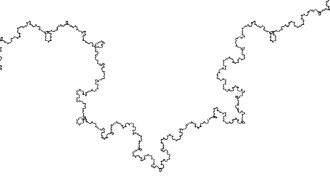 Materials Science
Materials ScienceHow fractals jam glassy materials
Understanding the intricate energy landscape of glasses could help to explain what happens when glassy materials are deformed or when coffee beans in a container jam.
-
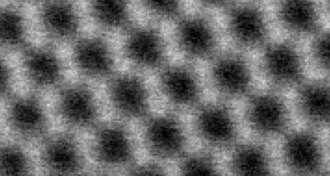 Materials Science
Materials ScienceBlender whips up graphene
Easy recipe makes large quantities of graphene using kitchen blender.
By Beth Mole -
 Materials Science
Materials ScienceOyster shells could inspire improved armor
Making tiny indentations in windowpane oyster shells has revealed some processes that could inspire better armor.
-
 Materials Science
Materials ScienceLight filter lets rays through from only one direction
Angle-sensitive light filter could improve photography, telescopes and solar energy harvesting.
By Andrew Grant -
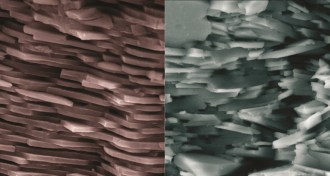 Materials Science
Materials SciencePearl coating inspires tougher ceramics
A material called mother of pearl, or nacre, has inspired the design of more durable, less brittle ceramics.
-
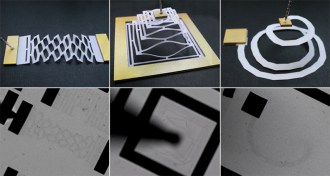 Materials Science
Materials ScienceWorld’s thinnest material stretches, bends, twists
Graphene, the thinnest known material at one carbon atom thick, can be manipulated under the microscope using tricks from a variety of paper-cutting origami called kirigami.
By Andrew Grant -
 Chemistry
ChemistryMilk protein a potential flame retardant
Protein found in milk offers a nontoxic way to extinguish fabric fires.
By Beth Mole -
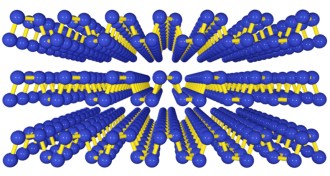 Materials Science
Materials SciencePhosphorene introduced as graphene alternative
Sheets of ultrathin phosphorus could lead to faster semiconductor electronics.
By Andrew Grant -
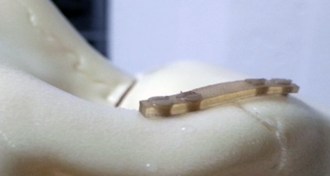 Materials Science
Materials ScienceSilk bone screws may mend better than metal ones
The silk-made screw and plates are less stiff than metal ones and dissolve in the body, making them a safer, less invasive alternative for setting broken bones.
-
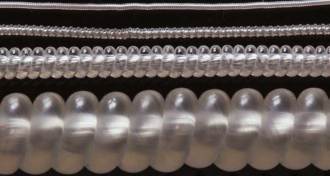 Materials Science
Materials ScienceMaking artificial muscles with a spin
Scientists have given ordinary fishing line and sewing thread a new twist. When coiled into tight corkscrews, the fibers can lift loads more than 100 times as heavy as those hefted by human muscles.
By Meghan Rosen